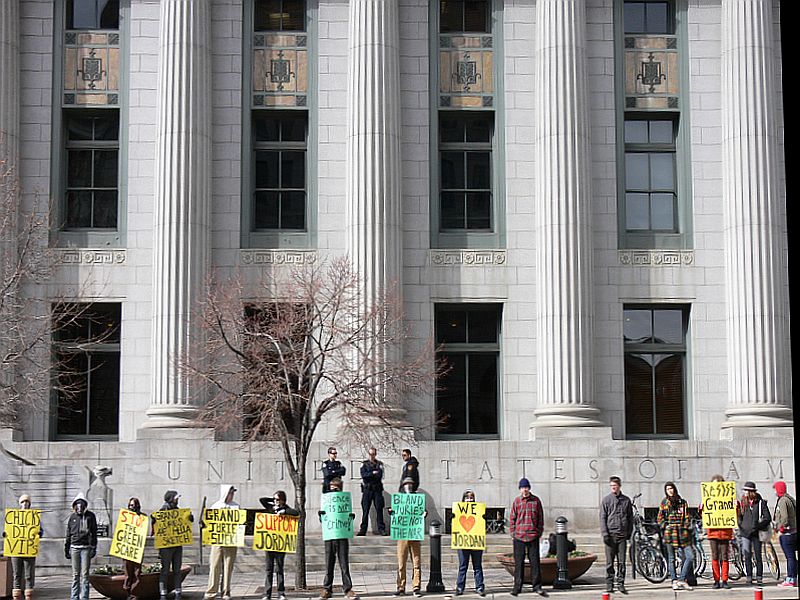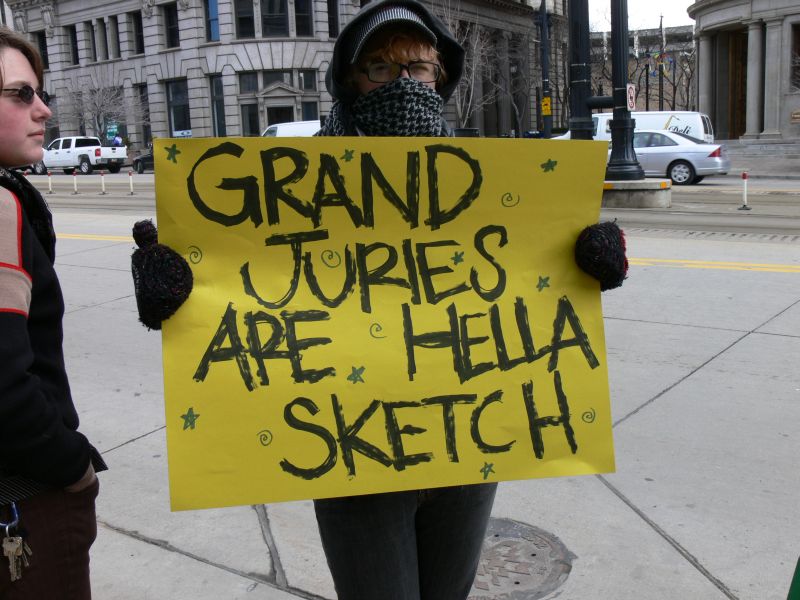When two animal rights activists were subpoenaed to a federal grand jury on February 18th, local organizers showed that the activists had public support, and that no one would be intimidated into remaining silent.
The grand jury was investigating the release of thousands of mink from two fur farms by the Animal Liberation Front. Just two week later, the FBI’s Joint Terrorism Task Force arrested two Utah animal rights activists, William Viehl and Alex Hall, in connection with the fur farm raids.
I wanted to draw your attention to this grand jury, because it’s an example of how the government uses the pretext of “investigating illegal activity” to harass and intimidate lawful activists. It’s also a great example of how people can organize in response to those tactics.
The activists subpoenaed weren’t been charged with any crimes. They were hauled before a grand jury and ordered to testify about their political beliefs and political associations, all without being permitted to have an attorney present. In these situations, if activists refuse to cooperate they face jail time. If they agree to cooperate, they aid the government’s fishing expedition and validate witch hunt tactics.
Grand juries have historically been used against social movements. They’re a tool to harass and intimidate activists, and foster fear and distrust among activist communities.
In this case, Jordan Halliday, 21, refused to cooperate and was released. Another activist was called to testify and also released.“Although I do support it, I am not affiliated with it,” Halliday said.
Halliday said prosecutors were unhappy with his refusal to testify. He expects to be called before the grand jury again.
“I’m uncertain at this point,” he said. “It seems they were just fishing for information.”
What Halliday is describing is part of the FBI’s 5-Step Process to Criminalize First Amendment Activity as “Terrorism.†He’s not accused of being involved in the fur farm raid, but he openly unabashedly supports those tactics.
The government argues that grand juries exist to determine if there is enough evidence of a crime to pursue a criminal case. But grand juries almost always indict because only the prosecution presents its case, says University of Utah Associate Law Professor Daniel Medwed notes.
Sure enough, that’s exactly what happened. I actually had a version of this post set to be published on March 5th, but removed it because the grand jury indicted two activists just hours earlier. In the original version of the post, I wrote:
There’s something brewing in Utah, and if the recent arrests are any indication, it might be part of an Animal Enterprise Terrorism Act prosecution. But if the response of activist communities is any indication, the government is going to have a hell of a fight on its hands.
Check out these photos I received from outside of the courthouse. It’s inspiring to see the public support shown to these activists. Rather than stay at home and be afraid of scare-mongering tactics, local activists organized a demonstration and reached out to the media. [If you’re curious about the masks, check out “5 Reasons for Activists to Cover Their Faces at Protestsâ€]
These activists didn’t go into the grand jury proceedings alone. They had a vocal community of people supporting them every step of the way.
What do you think should be done to show the two individuals facing “terrorism” charges the same support?

